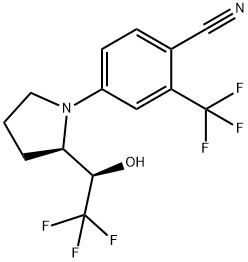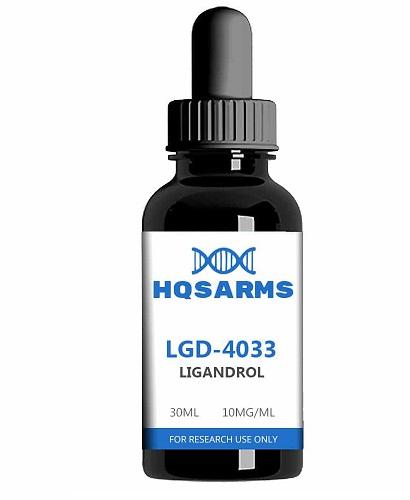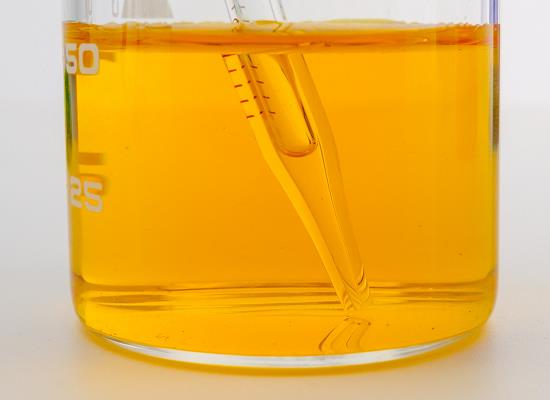LGD-4033:a selective androgen receptor modulator
Introduction
LGD-4033, also known as Ligandrol, is a type of selective androgen receptor modulator (SARM). SARMs are a class of compounds that are being researched for their potential in treating conditions such as muscle wasting, osteoporosis, and other conditions related to muscle and bone health. LGD-4033 is often considered one of the more potent SARMs and is being investigated for its ability to increase lean muscle mass and strength without causing the undesirable side effects associated with traditional anabolic steroids. It works by selectively binding to androgen receptors in the body, particularly those in muscle and bone tissues1. Discovered by Ligand Pharmaceuticals, currently developed by Viking Therapeutics, many studies confirm LGD-4033 can help build muscle mass without significant side effects. Unlike testosterone, it is not highly suppressive, allowing for cycles without worrying about prolonged shutdown.
Application
Primarily explored for its potential in addressing muscle-related conditions, Ligandrol shows promise in combating muscle wasting associated with cancer, chronic diseases, and aging. Additionally, researchers are studying its impact on bone health, with potential applications in treating osteoporosis by stimulating bone formation through targeted androgen receptor interactions. The compound's ability to enhance muscle recovery and strength post-surgery or injury is also being examined, suggesting potential benefits in rehabilitation scenarios. Despite these promising avenues, it's crucial to note that the clinical use of LGD-4033 is still in the research phase, and regulatory approval has not been granted as of my last knowledge update in January 2022. The controversial use of SARMs for non-medical purposes necessitates caution, and individuals should stay informed about the latest research and consult healthcare professionals for personalized advice.
Selective androgen receptor modulators are an emerging class of therapeutics targeted to cachexia, sarcopenia, and hypogonadism treatment. LGD-4033 is a SARM which has been included on the Prohibited List annually released by the World Anti-Doping Agency (WADA). The aim of the present work was the investigation of the metabolism of LGD-4033 in a human excretion study after administration of an LGD-4033 supplement, the determination of the metabolites' excretion profiles with special interest in the determination of its long-term metabolites, and the comparison of the excretion time of the phase I and phase II metabolites. The results were also compared to those derived from previous LGD-4033 studies concerning both in vitro and in vivo experiments. Supplement containing LGD-4033 was administered to one human male volunteer and urine samples were collected up to almost 21 days. Analysis of the hydrolyzed (with β-glucuronidase) as well as of the non-hydrolyzed samples was performed using liquid chromatography-high resolution mass spectrometry (LC-HRMS) in negative ionization mode and revealed that, in both cases, the two isomers of the dihydroxylated metabolite (M5) were preferred target metabolites. The gluco-conjugated parent LGD-4033 and its gluco-conjugated metabolites M1 and M2 can be also considered as useful target analytes in non-hydrolyzed samples. The study also presents two trihydroxylated metabolites (M6) identified for the first time in human urine; one of them was recently reported in an LGD-4033 metabolism study in horse urine and plasma4.
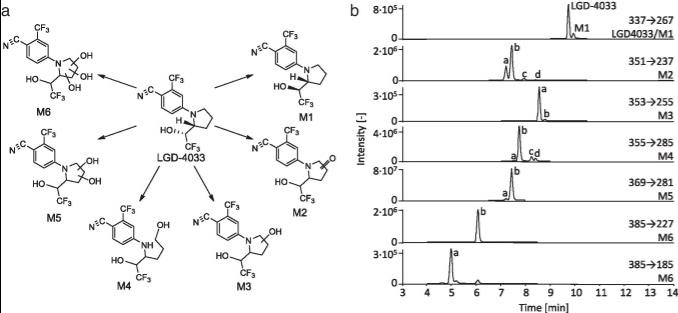
Figure. 1 a Structures of LGD-4033 and main metabolites, and b extracted ion chromatograms of LGD-4033 and selected metabolites in a sample after the ingestion of five doses of 50 µg of LGD-4033
Safety
LGD-4033, belongs to the group of selective androgen receptor modulators (SARMs). Ligandrol was first included in the WADA Prohibited List in 2018<>. Clinical Trials: LGD-4033 has been studied in clinical trials primarily to assess its safety, tolerability, and potential therapeutic applications. These trials involve monitoring participants for adverse effects, changes in vital signs, and any other signs of toxicity. Short-Term Safety: In short-term studies, LGD-4033 has generally been reported as well-tolerated with minimal adverse effects. Common side effects, when they occur, are usually mild and may include headaches, nausea, and fatigue. Long-Term Safety: The long-term safety of LGD-4033, especially with extended use, is not as well-established. Since SARMs are a relatively new class of compounds, more research is needed to understand the potential risks and benefits associated with prolonged use. Liver Enzymes: Some studies have reported increases in liver enzymes with the use of LGD-4033. However, the clinical significance of these increases and whether they lead to liver damage is not fully understood. It's important to note that the safety profile of LGD-4033 may vary among individuals, and the available information may not cover all potential risks. Additionally, the use of LGD-4033 outside of supervised clinical settings, such as in bodybuilding or athletic contexts, is not recommended due to potential health risks and legal implications. For example, a 32-year-old man who developed severe drug-induced liver injury after using Ligandrol (LGD-4033). The diagnosis was confirmed by a liver biopsy that showed cholestatic hepatitis with a mild portal, periportal, and perisinusoidal fibrosis. Ligandrol is a selective androgen receptor modulator that is available over the counter and via the internet3.
LGD-4033 is prohibited in sports by the World Anti-Doping Agency (WADA) and led to 62 adverse analytical findings (AAFs) in 2019. But not only deliberate doping with LGD-4033 constitutes a problem. In the past years, some AAFs that concerned SARMs can be attributed to contaminated dietary supplements (DS). Thus, the urgency to develop methods to differentiate between inadvertent doping and abuse of SARMs to benefit from the performance-enhancing effect of the compound in sports is growing. To gain a better understanding of the metabolism and excretion patterns of LGD-4033, human micro-dose excretion studies at 1, 10, and 50 µg LGD-4033 were conducted. Collected urine samples were prepared for analysis using enzymatic hydrolysis followed by solid-phase extraction and analyzed via LC-HRMS/MS. Including isomers, a total of 15 phase I metabolites were detected in the urine samples. The LC-HRMS/MS method was validated for qualitative detection of LGD-4033, allowing for a limit of detection (LOD) of 8 pg/mL. The metabolite M1, representing the epimer of LGD-4033, was synthesized and the structure elucidated by NMR spectroscopy. As the M1/LGD-4033 ratio changes over time, the ratio and the approximate LGD-4033 concentration can contribute to estimating the time point of drug intake and dose of LGD-4033 in doping control urine samples, which is particularly relevant in anti-doping result management2.
Reference
1. Kwiatkowska D, Wicka M, Grucza K, Konarski P, Drapa?a A, Kaliszewski P. Variation of Sequential Ligandrol (LGD-4033) Metabolite Levels in Routine Anti-Doping Urine Samples Detected with or without Other Xenobiotics. Molecules. 2023 Sep 7;28(18):6486.
2. Wagener F, Guddat S, G?rgens C, Angelis YS, Petrou M, Lagojda A, Kühne D, Thevis M. Investigations into the elimination profiles and metabolite ratios of micro-dosed selective androgen receptor modulator LGD-4033 for doping control purposes. Anal Bioanal Chem. 2022 Jan;414(2):1151-1162.
3. Barbara M, Dhingra S, Mindikoglu AL. Ligandrol (LGD-4033)-Induced Liver Injury. ACG Case Rep J. 2020 Jun 11;7(6):e00370.
4. Fragkaki AG, Sakellariou P, Kiousi P, Kioukia-Fougia N, Tsivou M, Petrou M, Angelis Y. Human in vivo metabolism study of LGD-4033. Drug Test Anal. 2018 Nov;10(11-12):1635-1645.
You may like
Related articles And Qustion
Lastest Price from LGD-4033 manufacturers

US $10.00/box2025-12-02
- CAS:
- 1165910-22-4
- Min. Order:
- 1box
- Purity:
- 99%
- Supply Ability:
- 100000box
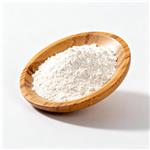
US $0.00/box2025-09-24
- CAS:
- 1165910-22-4
- Min. Order:
- 1box
- Purity:
- 0.99
- Supply Ability:
- 10tons
